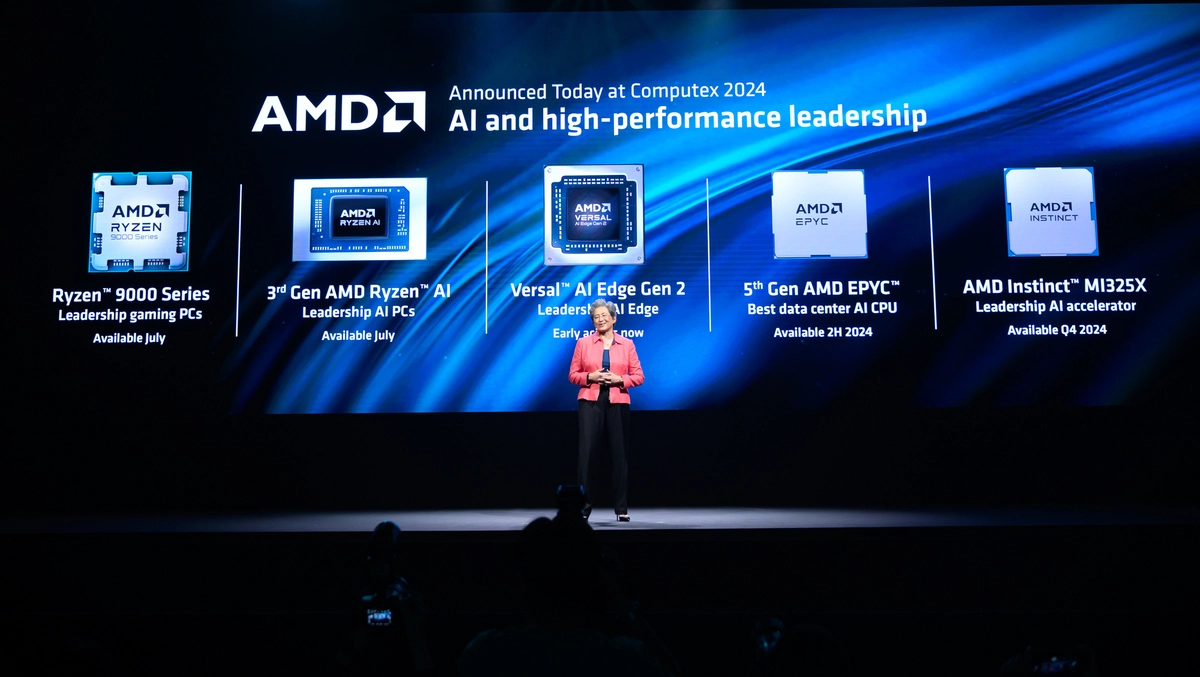
AMD debuts raft of new AI-powered products at Computex
AMD has made a significant splash at Computex 2024 with the unveiling of several new products poised to define the next generation of AI-powered computing. In the event's keynote address, Dr Lisa Su, AMD Chair and CEO, announced a slew of innovative developments aimed at pushing the boundaries of performance, efficiency, and innovation across a range of applications.
A highlight of the keynote was the introduction of the AMD Ryzen AI 300 Series Processors. These processors incorporate advanced AI capabilities, offering 50 TOPS of AI processing power–the highest in any laptop NPU. This launch marks a strategic push to enhance the performance of Copilot+ PCs, elevating user experiences with transformational AI functionalities.
Additionally, AMD revealed the Ryzen 9000 Series Desktop Processors, which are powered by the Zen 5 architecture. This new series promises around a 16% generational increase in instructions per clock (IPC) and sets a new performance benchmark for gaming and productivity tasks. The flagship Ryzen 9 9950X has been hailed as the world's fastest consumer desktop processor, emphasizing AMD's leadership in desktop computing.
In alignment with the growing demand for high-performance data centre solutions, AMD also showcased an expanded AMD Instinct Accelerator Roadmap. The MI325X accelerator, which is on schedule to be available by the end of 2024, is set to feature 288GB of HBM3E memory and a peak memory bandwidth of 6TB/s. This development further solidifies AMD's position in delivering industry-leading memory capacity and bandwidth, crucial for AI compute performance. Furthermore, the upcoming AMD CDNA 4 and CDNA Next architectures, slated for 2025 and 2026, respectively, promise to significantly enhance AI inference performance.
The upcoming 5th Gen AMD EPYC processors codenamed Turin, were also previewed. These processors, expected in the latter half of 2024, will support up to 192 cores and 384 threads. They boast impressive performance metrics, outstripping competitors by 3.1x in scientific simulation work and offering superior AI inferencing performance in smaller language models.
Dr. Su's address was bolstered by appearances from leaders of key industry partners like Microsoft, HP, Lenovo, and ASUS. They collectively illustrated how AMD's new hardware is propelling AI and high-performance computing forward. Microsoft's Chairman and CEO, Satya Nadella, highlighted the partnership's importance, particularly in the context of delivering enhanced AI functionalities and user value across various computing platforms.
In the graphics domain, AMD introduced the ROCm 6.1, which aims to make AI development with Radeon GPUs more accessible. Furthermore, the new AMD Radeon PRO W7900 Dual Slot Workstation Graphics Card is designed to deliver scalable AI performance for advanced, high-performance platforms.
On the edge computing front, AMD's technology is enabling innovative applications across various sectors. The Versal AI Edge Gen 2 is being utilised in applications such as Canon's Free Viewpoint Video System for live broadcasts and Subaru's EyeSight ADAS Platform, which aims to achieve zero fatalities by 2030. Other notable implementations include Illumina's genome sequencing technology and Hitachi Energy's HVDC protection relays for predicting electrical overvoltage.
